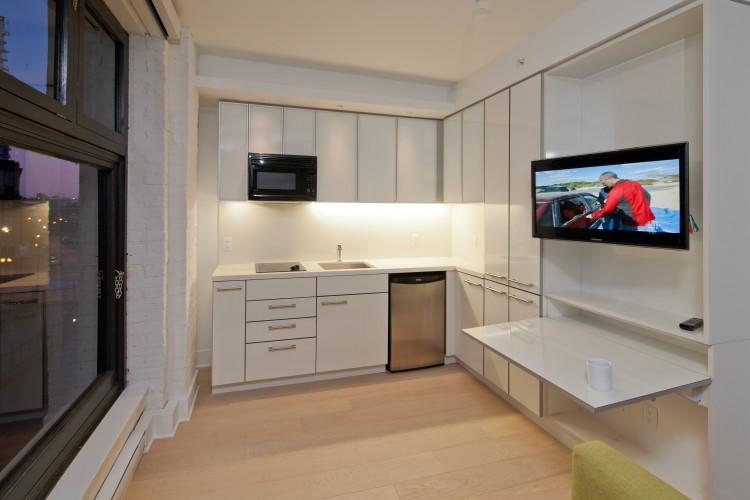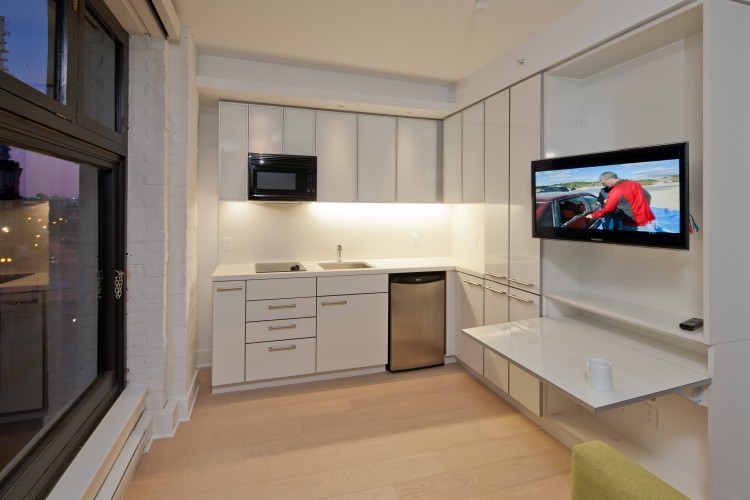TORONTO—As house prices skyrocket, a movement towards itsy-bitsy real estate offers homebuyers a new option for a fraction of the price—and the square footage.
Cozy little homes with inventive solutions to compensate for the lack of space are a growing trend in Canada’s pricey cities, offering younger buyers a way into the increasingly inaccessible real estate game.
Canada’s major cities have all begun to see apartments and micro-condos under 400 square feet—roughly the size of two parking spots. One project in Toronto, DNA3, is still being built but has already sold out of 270-square-foot units.
Market analysts say the average condo size is rapidly shrinking, with overall footage dropping about 80 square feet in the last four years alone.
“It has gone down pretty drastically over that just-over-four-year period,” said Myers.
“Before, something like 375 [square feet] was considered extremely small. Now we have gone down to 277—it’s pretty unbelievable.”
For those looking to live in the heart of the city, there are fewer options as prices continue to rise. For these urbanites, location is key, the city is their living room, and a smaller home is a sacrifice they are willing to make to have luxurious amenities in the heart of the city.
Investor Buyers
Myers believes the micro-condos are being rented out by investor buyers.
Matthew Slutsky agrees. His company BuzzBuzzHome.com, which tracks development listings, is tracking over 100 units smaller than 400 square feet being built in B.C.’s Lower Mainland and in the Greater Toronto Area, with a few units in Calgary, Montreal, and a handful more scattered around the country.
Slutsky suspects that as developers opt out of building new rental properties, investors are opting in, buying properties for residual income rather than residence.
“There is a complete shift in what is being brought to market because of that,” he said. “This could be seen as the new rental stock.”









